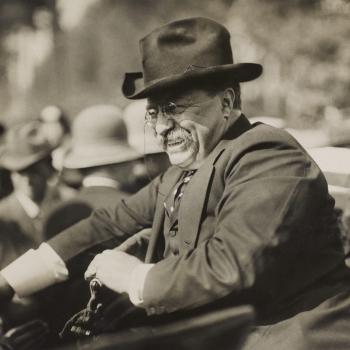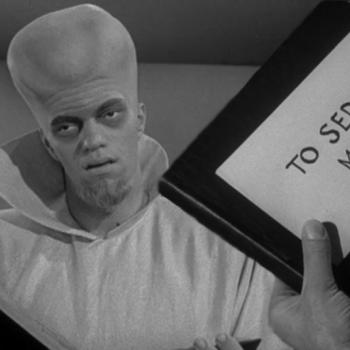Sometimes the explanations of the number of evangelicals who voted for Donald Trump comes across as a tad simplistic. Consider the following from Nancy LeTourneau (thanks to John Fea):
“For the first time since Europeans arrived in this country,” Mutz notes, “white Americans are being told that they will soon be a minority race.”When members of a historically dominant group feel threatened, she explains, they go through some interesting psychological twists and turns to make themselves feel okay again. First, they get nostalgic and try to protect the status quo however they can. They defend their own group (“all lives matter”), they start behaving in more traditional ways, and they start to feel more negatively toward other groups.
The question becomes: how much of this is about Christianity and how much is about whiteness?
What if the evangelical turnout for Trump was not about race but the fallout of megachurches? After all, Bob Buford, who recently died, deserves a lot of credit for behind the scenes developments among evangelical churches, as Ed Stetzer explains:
About 30 years ago, Buford pioneered Leadership Network and began to influence the influencers. He invested his time to train the trainers. He sought to create learning communities that might foster mutual learning among high capacity leaders. He did this early on with men like Bill Hybels, Rick Warren, and Robert Lewis.
Buford sought to find effective leaders who would teach others and then catalyze their skills. The end result was that leaders were pushed to a great capacity of leadership. Gifted pastors became effective leaders, resulting in stronger ministries. Their influence spread and, as a result, Buford’s impact was multiplied.
Leadership Network never sought to be out in front. In fact, the goal was to fly under the radar of other groups. Instead, they sought to make the clients leaders and churches the stars, not the group, and certainly not Buford. Being behind the scenes was exactly the intended role—to be the platform and not the show.
These churches, with Buford in the background as a catalyst, began to slowly change a problem. Seminaries taught many pastors how to be students of scripture (which is great), but not how to lead and manage churches. They often could teach and preach, but not lead their way out of a paper bag.
Buford helped catalyze a movement—movements really—of churches that sought to have discerning leadership practices. Not surprisingly, they were effective and grew to the point that those movements and methods influenced thousands upon thousands of churches, probably including your own.
. . . Buford did not just convene meetings. He funded the impact he desired. He did so selectively, however, only choosing investments that would create exponential returns. For example, he and Colorado billionaire Phil Anschutz financed the Burning Bush Fund. They took their catalyzing passion and combined it with strategic investment. Leaders like Mark Driscoll, Tim Keller, Larry Osborne, Greg Surratt, Neil Cole and others involved their churches and ministries.
In fact, Stetzer adds:
Together, Buford and Drucker made a huge impact on the direction of the church. Simply put, your church probably sings like a Calvary Chapel, but is led like a Saddleback. Those two men are part of the reason why.
Like I say, why identify race as the explanation for evangelical voters when you have evidence of another influence on the course of twentieth-century evangelicalism? If journalists had data on evangelicals signing up for the Ku Klux Klan or opposing Affirmative Action policies, then you could plausibly connect the dots between race and Trump. But we do know that evangelical Protestantism shifted over the course of the last three decades of the twentieth century to a megachurch model. And we know that 81 percent of evangelicals, many of whom went to megachurches or listened to megachurch pastor sermons, voted for Trump.
I guess it depends on when you think human developments are complicated and when they are simple.












